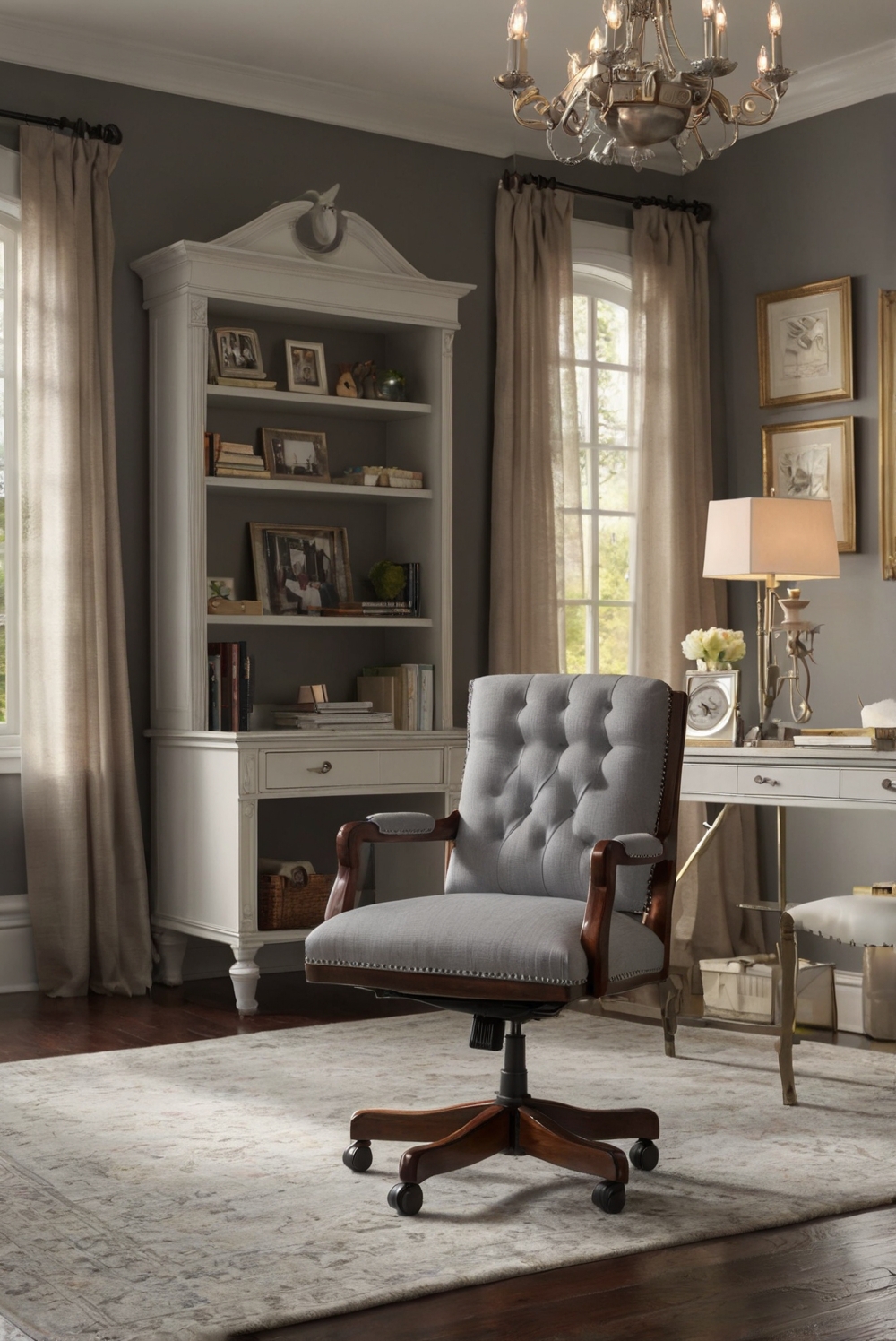Discover the ergonomic advantages of incorporating a kneeling chair into your home office setup, enhancing comfort and productivity for your daily interior design routine.
Using a kneeling chair in your home office can have several benefits for your health and posture. These chairs promote an open hip angle, which can help alleviate lower back pain and improve your overall sitting posture. They also engage your core muscles, leading to better alignment and reduced pressure on the spine. Additionally, kneeling chairs can increase blood circulation and prevent slouching, ultimately enhancing your focus and productivity while working from home.
To incorporate this ergonomic solution into your home decor, consider choosing a chair that complements your existing furniture style and color scheme. Make sure to place the chair in an area with proper lighting and ventilation to create a comfortable workspace. By incorporating a kneeling chair into your home office setup, you can enjoy the benefits of improved posture and health while also enhancing the aesthetic appeal of your space.
Benefits of using a kneeling chair in your home office
Improved Posture: One of the key benefits of using a kneeling chair in your home office is the improvement in posture it offers. Traditional office chairs often promote slouching, which can lead to back and neck pain. Kneeling chairs encourage a more upright posture, which can help alleviate strain on the spine and promote better alignment.
Reduced Back Pain: Many people experience back pain from sitting for long periods, especially in office chairs that don’t provide adequate support. Kneeling chairs can help reduce back pain by distributing the body’s weight more evenly and promoting a natural curve in the spine, which can alleviate pressure on the lower back.
Improved Core Strength: Using a kneeling chair engages your core muscles as you balance and sit upright. This can help strengthen your core over time, which is beneficial for overall stability and posture. By strengthening the core, you may also experience less fatigue and discomfort during long hours of sitting.
Additional benefits
Increased Focus and Productivity: Good posture and reduced pain can lead to increased focus and productivity. When you’re not distracted by discomfort, you can concentrate better on your work and maintain a higher level of productivity throughout the day.
Customizable Comfort: Kneeling chairs often come with adjustable features that allow you to customize your sitting experience. You can adjust the seat height, knee pad angle, and overall tilt to find the most comfortable position for your body. This customization can help prevent discomfort and promote better sitting habits.
Conclusion
In conclusion, using a kneeling chair in your home office can provide a range of benefits, including improved posture, reduced back pain, increased core strength, enhanced focus and productivity, and customizable comfort. By incorporating a kneeling chair into your workspace, you can support your overall health and well-being while maintaining a comfortable and ergonomic sitting position. Consider investing in a kneeling chair to experience these benefits firsthand and enhance your home office setup.
1. How does a kneeling chair benefit your posture in a home office setting?
Using a kneeling chair can help improve posture by promoting a more natural spinal alignment. The angled seat of a kneeling chair encourages the user to sit upright, preventing slouching and reducing strain on the lower back. By distributing weight between the shins and the buttocks, a kneeling chair can also alleviate pressure on the lumbar spine, leading to reduced discomfort and improved overall posture.
2. What are the ergonomic benefits of using a kneeling chair in a home office?
Ergonomically designed kneeling chairs offer several benefits for home office users. They can help reduce the risk of developing musculoskeletal disorders by promoting proper spinal alignment and reducing pressure on the lower back. Kneeling chairs also encourage active sitting, which can improve circulation and prevent stiffness in the hips and legs. Additionally, the open hip angle of a kneeling chair can help engage core muscles, leading to a stronger and more stable posture throughout the workday.
3. How does using a kneeling chair enhance comfort during long hours of work in a home office?
Kneeling chairs are designed to provide comfort and support during extended periods of sitting in a home office. The angled seat and knee pads of a kneeling chair help distribute weight evenly, reducing pressure points and preventing discomfort. By promoting an upright posture, kneeling chairs can also help alleviate strain on the neck, shoulders, and lower back. This ergonomic support can lead to increased comfort and productivity, allowing you to focus on your work without experiencing aches and pains associated with prolonged sitting.
4. What are the potential health benefits of using a kneeling chair in a home office?
Using a kneeling chair in a home office can have several positive health effects. By encouraging proper spinal alignment and engaging core muscles, kneeling chairs can help prevent back pain and improve overall posture. The dynamic sitting position offered by a kneeling chair can also promote better circulation and reduce the risk of developing stiffness or discomfort in the hips and legs. These health benefits can contribute to a more comfortable and productive work environment, allowing you to focus on your tasks without being distracted by physical discomfort.
5. How can a kneeling chair improve focus and concentration in a home office?
The ergonomic design of a kneeling chair can help improve focus and concentration during work hours in a home office. By promoting an upright posture and reducing pressure on the lower back, a kneeling chair can help prevent fatigue and discomfort, allowing you to maintain better focus on your tasks. The active sitting position encouraged by a kneeling chair can also help increase circulation and oxygen flow, leading to improved alertness and mental clarity. These benefits can enhance productivity and efficiency, helping you stay engaged and motivated throughout the workday.




